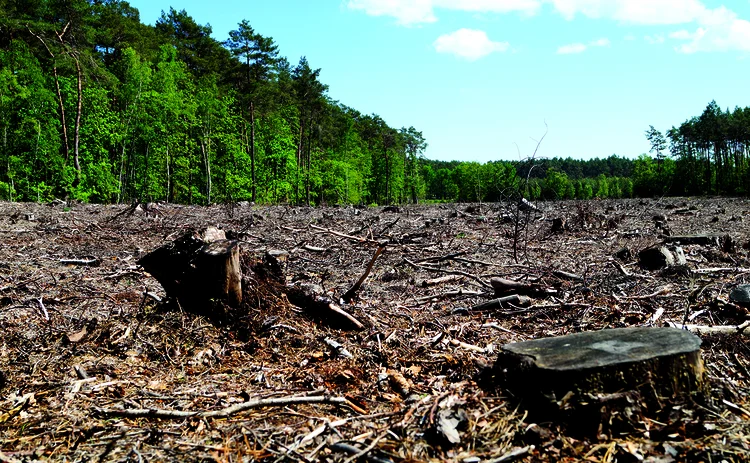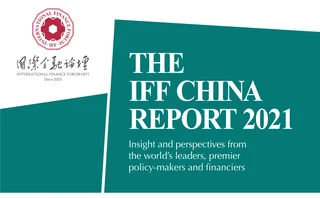
Emergency 2030


China has been a leader in discussions on the green bond market for a long time. Recently, the World Wide Fund for Nature (WWF) noted efforts to strengthen the approach to the variety of green investment and insurance instruments being piloted in the Chinese market. At the UN General Assembly in September 2020, President Xi Jinping announced China’s commitment to peak its emissions before 2030, and to reach carbon neutrality by 2060. This game-changing announcement helps put pressure on other big emitting countries to take bold action too. And, most importantly, it has raised the question of how financial institutions can contribute to this goal.
Today’s science has never been clearer. In addition to the climate crisis, the world is losing nature and biodiversity at a shocking and dangerous rate. A report published in 2019 by the Intergovernmental Science-Policy Platform on Biodiversity and Ecosystem Services (IPBES) – an intergovernmental organisation established by the UN General Assembly – entitled The global assessment report on biodiversity and ecosystem services – Summary for policy-makers, said that one million species already face extinction. In 2020, the WWF’s Living planet report revealed a 68% decline in global wildlife populations since 1970. The earth has lost half of its forests, half of its coral reefs, 85% of its wetlands and 90% of its fish stocks. It is no surprise the Global biodiversity outlook – Summary for policy-makers by the Convention on Biological Diversity (CBD) confirmed that none of the global biodiversity targets would be fully met by 2020.

However, there are still opportunities to halt and reverse the loss of nature if urgent and unprecedented action is taken today. Climate change and nature loss are deeply interconnected. Today, climate change drives nature loss, and the loss of nature exacerbates climate change. This negative cycle should be reversed; by protecting and restoring natural habitats – such as forests, wetlands, mangrove swamps and marine habitats – it is possible to mitigate the effects of climate change by around 30%.
Addressing climate change and nature loss is not just an environmental issue, but a social, economic, development and equity issue. To stem the climate emergency, we must make the transition to 100% renewable energy and completely phase coal out of the global energy system by 2050. To reverse nature loss, we urgently need to protect more natural spaces: at least 30% on land and in the ocean will curb the unsustainable exploitation of species and transition key economic sectors responsible for this loss. Financial institutions play a key role in addressing these challenges.
Businesses and financial institutions are starting to address climate risks directly. At the 2019 UN Climate Action Summit in New York, hosted by UN secretary-general António Guterres, major investors formed the Net-Zero Asset Owner Alliance, a group that now includes 30 institutional investors with more than US$5 trillion in assets under management. These institutions are committed to transitioning their portfolios to net zero emissions by 2050.
Regulators are also paying attention. Less than three years ago, a group of eight central banks and financial supervisors, including the People’s Bank of China, created the Network for Greening the Financial System: a ‘coalition of the willing’ that acknowledged climate risks could pose a threat to financial stability. That group has already grown to 87 members and 13 observers from five continents, representing more than two-thirds of global GDP.
Financial institutions can now set targets that reflect this net zero ambition through the Science Based Targets Initiative (SBTi) for climate, of which the WWF is proud to be a founding member. To date, nearly 60 financial institutions have publicly committed to set emissions reduction targets through the SBTi in line with the Paris Agreement on climate change. The WWF looks forward to Chinese banks joining that initiative, and WWF China is already working together with the China Banking Association and other partners to provide support to Chinese banks to set science emissions
reduction targets.
The special policy study on green finance by the China Council for International Cooperation on Environment and Development highlights the need, and opportunity, to make financial flows consistent with halting ecosystem degradation and restoring nature. It will also help achieve the CBD’s post-2020 global biodiversity framework, which will be hosted in China this year. One of the ways to do that is to help the financial sector understand the materiality and financial impact of nature-related risks. The WWF is working with partners on the establishment of the Taskforce on Nature-related Financial Disclosures, which will deliver a common framework by the end of 2022.
Some tools to manage nature-related risk already exist, such as the Water Risk Filter – an online tool developed by the German Development Finance Institution and the WWF to help leading global corporations prioritise water risks, and link risk assessment results to customised water stewardship recommendations and actions.
The importance of investing in nature
The recent New nature economy report by the World Economic Forum (WEF) showed investment in nature-based solutions that harness ecosystems to address key societal challenges could create up to $10 trillion in annual business value by 2030 and create 395 million new jobs. A report by the WWF and the International Labour Organization (ILO) showed that around 1.2 billion jobs in sectors such as farming, fisheries, forestry and tourism depend on the effective management and sustainability of healthy ecosystems.
Therefore, almost half the global workforce could be at risk from climate change and nature loss. This means advancing a net-positive restoration agenda so that, by the end of this decade, we will have more nature, not less. Such a goal is very ambitious, but necessary to safeguard the health of ourselves and the planet. It calls for the world to take action now to reverse biodiversity loss and ensure that nature is in a better state in 2030 than it is now, through improvements in the health, abundance and resilience of species, populations and ecosystems – so that humans may live in harmony with nature.
In many ways this is analogous to China’s ‘ecological civilisation’ principles. Ecological civilization is a comprehensive concept with specific objectives on climate, nature and, more importantly, the way people live in harmony with nature. Relatively, China’s ‘nature-positive’ concept is concrete and time-bound, which, with carbon-neutrality goals and actions, are integrated into China’s ecological civilisation concept. By embracing nature-positive, China and the world could help translate the ecological civilisation into action, clearly placing nature high on the global environmental policy agenda.
According to the WEF, investing in restoring ecosystems can have significant impacts: restoring 46% of the world’s degraded forests could generate between $7 and $30 in economic benefits for every dollar invested – a great return on investment for investors and the environment. The new Dutch Fund for Climate and Development enables private investment in climate adaptation and mitigation to increase the resilience of communities and ecosystems most vulnerable to climate change. The fund is a pioneering consortium, led by the Dutch Entrepreneurial Development Bank, the Netherlands Development Organisation, the WWF, climate fund managers and other partners. Its €160 million fund is expected to catalyse more than €500 million for nature and climate solutions to boost the health of freshwater, forest, agricultural and ocean ecosystems, and improve water management.
Today, many investors, policy-makers, financial regulators and central banks are trying to reduce the impact of global warming combined with less biodiversity. The WWF urges financial institutions to align their portfolios with science-based targets for climate and for nature. It is key for the economy to embrace the vision of a carbon-neutral and nature-positive future; in practical terms, that means net zero emissions by 2050 and a halt to and reversal of nature loss by 2030. These are two of the goals of the UN’s 2030 Agenda for Sustainable Development that the world needs to embrace for an equitable, safe and sustainable future. There has never been a more crucial time to act.
Only users who have a paid subscription or are part of a corporate subscription are able to print or copy content.
To access these options, along with all other subscription benefits, please contact info@centralbanking.com or view our subscription options here: subscriptions.centralbanking.com/subscribe
You are currently unable to print this content. Please contact info@centralbanking.com to find out more.
You are currently unable to copy this content. Please contact info@centralbanking.com to find out more.
Copyright Infopro Digital Limited. All rights reserved.
As outlined in our terms and conditions, https://www.infopro-digital.com/terms-and-conditions/subscriptions/ (point 2.4), printing is limited to a single copy.
If you would like to purchase additional rights please email info@centralbanking.com test test test
Copyright Infopro Digital Limited. All rights reserved.
You may share this content using our article tools. As outlined in our terms and conditions, https://www.infopro-digital.com/terms-and-conditions/subscriptions/ (clause 2.4), an Authorised User may only make one copy of the materials for their own personal use. You must also comply with the restrictions in clause 2.5.
If you would like to purchase additional rights please email info@centralbanking.com test test test







